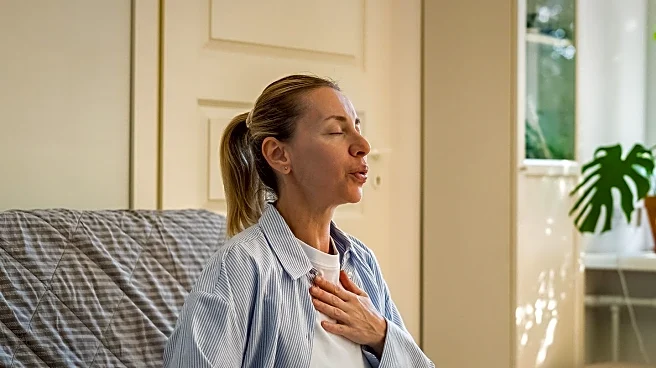What's Happening?
Recent reports have highlighted an alarming trend of increasing lung cancer cases among young, fit, non-smoking women. This demographic shift challenges the traditional perception of lung cancer as primarily affecting older male smokers. The rise in cases among young women has prompted medical professionals to investigate potential causes, including genetic factors, environmental influences, and air pollution. The situation underscores the need for more inclusive research and awareness about lung cancer symptoms and risk factors, particularly in populations that have been historically underrepresented in clinical trials.
Why It's Important?
The increase in lung cancer cases among young non-smoking women has significant implications for public health and cancer research. It suggests the need for a broader understanding of lung cancer risk factors beyond smoking, including genetic predispositions and environmental exposures. This trend may lead to changes in screening practices and healthcare policies to better address the needs of this demographic. Additionally, it highlights the importance of funding and research focused on lung cancer, which has traditionally received less attention compared to other cancers. Understanding the unique challenges faced by young women with lung cancer can improve diagnosis, treatment, and support systems.
What's Next?
Medical researchers and healthcare providers are likely to intensify efforts to study the causes of lung cancer in young non-smoking women, potentially leading to new diagnostic tools and treatment options. Public health campaigns may focus on raising awareness about lung cancer symptoms and risk factors in this demographic. The findings could also influence policy decisions regarding air quality and environmental health standards. As research progresses, there may be increased advocacy for more comprehensive cancer research funding and support for affected individuals.
Beyond the Headlines
The trend of rising lung cancer rates among young non-smoking women may prompt discussions about the role of environmental justice and socioeconomic factors in health outcomes. It raises questions about the impact of air pollution and urban living conditions on vulnerable populations. Additionally, the situation may lead to a reevaluation of gender biases in medical research and treatment, emphasizing the need for more inclusive and equitable healthcare practices.











